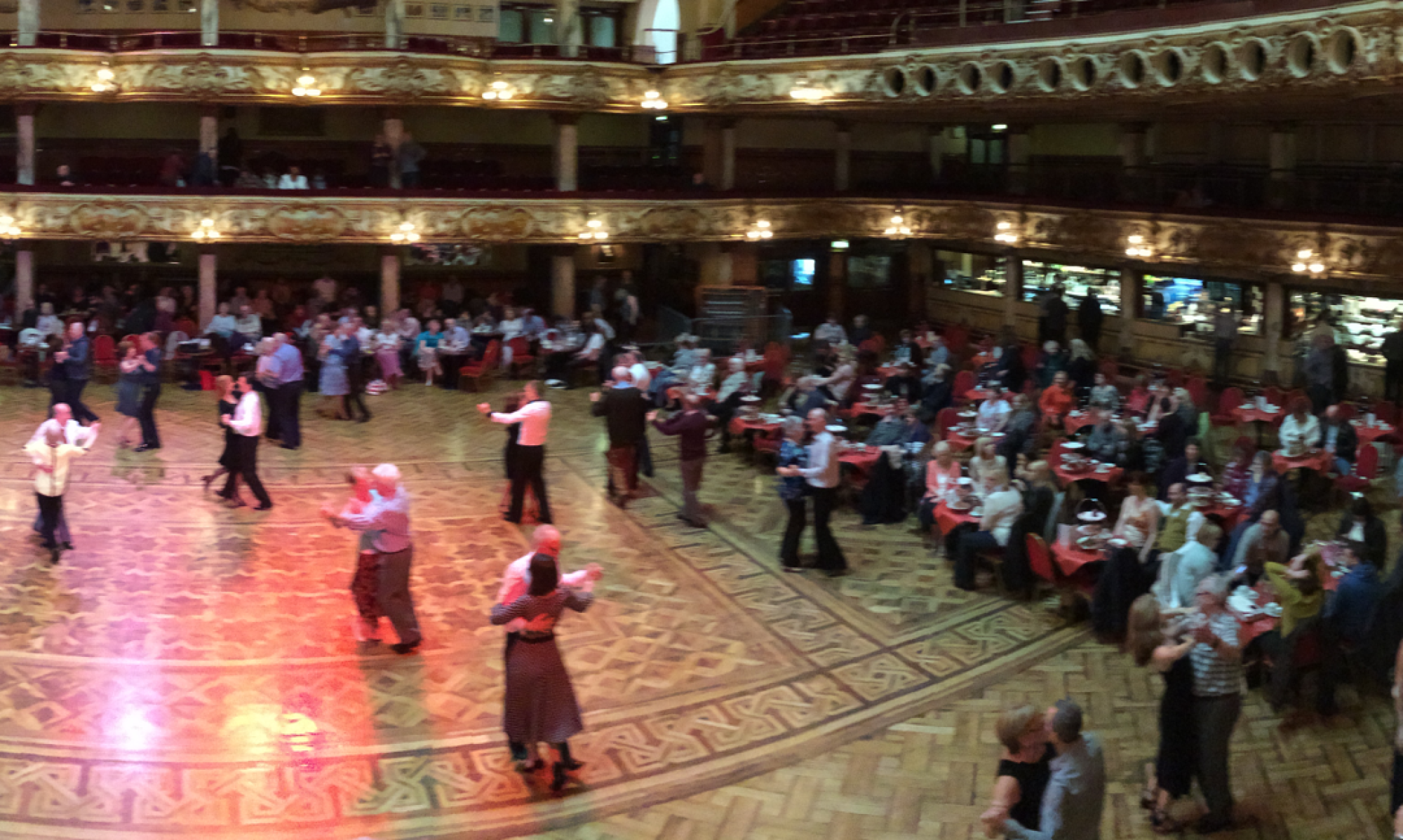You know what’s frustrating? Learning some great moves in a dance you love, then going out to a social dance and realizing you can’t tell what songs you can use them to.
Yet, despite how confusing it can be at the beginning, there ARE certain instruments or sound styles that traditional music of a dance genre use. Let’s look at a few of the most popular: salsa, cha cha, rumba, waltz, and tango.
Foxtrot
Quickstep
Samba
Salsa
Salsa music takes many forms, but is generally upbeat, joyful music with a jazzy feel. Some of the common instruments you will hear are the clave, the conga drum, the cow bell, piano, bass and horns. In Toronto, I generally find the music tends to separate into three categories; a ‘traditional’ sound with lots of horns and the cowbell in the chorus, an afro-cuban jazz with more piano and a relatively downtempo sound, and a more tribal salsa with an emphasis on percussions (usually including at least one percussion instrumental). There’s plenty of overlap between the types, but don’t worry, the same steps work for all of them. I’ve included an classic sample piece below.
Cha Cha
The Cha cha is a slower, more purposeful sound, but every bit as high energy as the salsa. Characterized by the syncopated rhythm of the guiro (also called a scrapper), the congo drum, or both, the cha can resemble a very upbeat rumba. Unlike the complicated rumba beats however, the cha cha drum beat tends to stay fairly consistent, except for the ‘cha-cha’ syncopation. As the cha cha is danced to a variety of modern music nowadays, the tempo might be the most reliable way of identifying it. Give the following classic cha cha a listen.
Rumba
Slow and sensual enough to give you romantic thoughts, the rumba most of us in North America dance to consists of the Spanish guitar backed by African percussion instruments. The tempo is the same as the cha cha, but listen for a more low-key and romantic sound. As with cha cha, modern instruments have replaced most of the traditional ones, making some cha cha and rumba songs interchangeable. The following sample however, is undeniably rumba.
Waltz (Slow)
Half the speed of its speedy cousin, the Viennese waltz, slow waltz is relaxed and graceful, often incorporating flowing strings with piano and a drum for the beat. A word of caution however: the drum beat ranges from clear and obvious, to so soft you have to strain to hear it. Both slow and Viennese waltzes use 3/4 timing instead of 4/4 timing, so if you know the difference, that can be the easiest way to spot a waltz. Here’s a slow waltz one with a stronger beat.
Tango (American or International)
The Tango is both dramatic and playful, angry and strong and deadly soft, making it a perfect soundtrack for dramatic dance shape and dips, or just making love on a bearskin rug.
Actually, the sudden and powerful changes and emphasis in tango makes it one of the easiest of the dance to spot. Keep your ears open for marching drums, bandoneons (a kind of accordion), strong and sharp piano notes, as well as violins, a double bass, and flute. Present-day tango also includes the tango nuevo, which tends to mix traditional instruments with a dance club beat. The following is a more traditional Tango.
